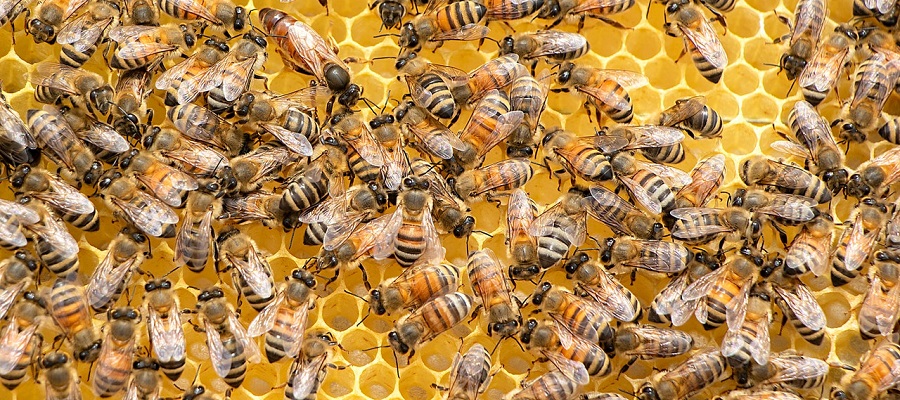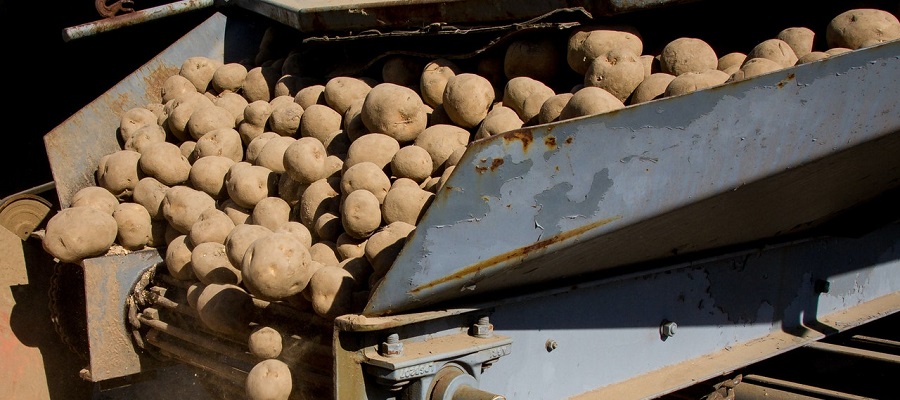Honey production in Brazil
Worldwide there are about 25000 bee species, in Germany about 600 (most solitary bees), in Brazil about 3000 species. Tropical honey bees are characterized by specific features such as a high reproductive rate, frequent swarming and distinct defensive behavior. Most tropical bees are resistant to the Varroa mite. American foulbrood, a bee disease whose treatment is subject to animal health legislation in Europe, does not occur in Brazil. The resistance of tropical bees to disease therefore means that fewer or no chemical treatments are needed. As a result, pollutant-free honey (and beeswax) can be produced more easily than in temperate climates.
In Brazil, honey production uses the Africanized honey bee (Apis mellifera), which has spread rapidly throughout South America to North America in the last fifty years. The Africanized honey bee produces 60 to 80 kilograms of honey per swarm per year.
Brazil is the world's sixth largest honey producer (after China, the United States, Argentina, Mexico and Canada). The total production of honey in 2005 was 24500 tons. In 2004, 21000 tons of honey were exported with a value of US$ 42 million.
With a consumption of 1.4 kg per capita, Germany ranks first in the world in the consumption of honey. Since the German honey harvest covers only about 20% of the domestic honey consumption, the missing 80% has to be imported from a total of 46 countries. In 2004, the net import volume was 80,238 tons of honey. Argentina covers over 25% of all honey imports in Germany, Brazil is now the second most important honey supplier with a share of a good 13%.
Due to the more difficult access to the American honey market caused by anti-dumping duties, Europe - and thus primarily Germany - remains the most important customer for honey from South America. Other main buyers of Brazilian honey are Spain, Canada, the USA and Mexico.
Wax
Beeswax is a glandular secretion of the worker bees consisting of 248 different substances and serves as building material for the honeycombs. It is obtained by melting out honeycombs and today, despite numerous substitutes, it is still used in various industries, such as pharmaceuticals, food and cosmetics. The total Brazilian production of beeswax in 2005 was 1650 tons. In 2004, 89 tons of beeswax were exported with a value of US$ 7.3 million, mainly to the United States, as well as to Germany, England, Japan and France.
Beeswax is exported worldwide mainly from Chile, Tanzania, Brazil, Holland and Australia.
Bee venom
Bee venom is produced in the venom gland of the worker bee and is a water clear liquid and consists mainly of proteins, polypeptides and aromatic substances. It also contains amino acids, lipids and enzymes. Each worker bee produces 0.3 mg of venom. In the pharmaceutical industry bee venom is processed into ointments or injectables. Although its healing effect on rheumatic complaints has been proven and attractive prices can be obtained, bee venom proves to be a difficult commodity to commercialize because, unlike other bee products, it can only be sold to specialized pharmacies and chemical companies due to its toxicity.
Pollen
Pollen, the male flower germ cells serve as protein food for the bees and is transported to the hive in the form of small balls on the hind legs. Because of its high nutritional value, pollen is used as a food supplement and is sold in the form of admixtures in honey, dissolved in liquid, dry or in capsules and tablets. It is rich in protein, lipids, minerals and vitamins. Pollen is said to promote cerebral circulation and is valued as a general tonic. In medicine, pollen preparations have proven effective against prostate diseases. Pollen is collected at the flight holes with the help of pollen traps, which strip the pollen loads from the returning collectors.
Royal jelly (royal jelly)
It is a glandular product of nurse bees and serves as food for the queen and the youngest bee larvae. It consists mainly of water, carbohydrates, proteins, lipids and vitamins. In apitherapy it is valued as a high-quality protein and vitamin preparation and is recommended for versatile use. Royal jelly is said to have beneficial effects against various diseases, such as infections and arteriosclerosis, and to normalize functional disorders of body organs. In the cosmetic industry it is used in the composition of various products. The whitish, creamy, sour-tasting royal jelly is obtained by sucking out the cells of young queen larvae - in some countries on an industrial scale. The feed juice from about 5 queen cells yields one gram. China is responsible for about 60% of the world's production and exports an estimated 450 tons per year to Japan, the U.S. and Europe.
Propolis
Propolis, or putty resin, is collected by bees from flower buds and placed in the baskets of the hind legs like pollen. It is used in the hive for cementing, sealing, insulating and preserving. Putty resin has a broad antibacterial spectrum. It is said to stimulate the growth of healing tissues. The mass, which is sticky when the hive is warm, becomes hard after cooling. It is obtained by scraping off frames and hive parts, and on a larger scale also with the help of devices specially brought into the hive for puttying. About 75% of the propolis produced in Brazil is exported, especially to Japan.
Pollination
The indirect benefits of honeybees consist in the transfer of pollen through nectar and pollen collection activities and are many times higher than their direct benefits. It is estimated that the economic benefit of pollination is over $100 billion per year worldwide.
Among the numerous insects, bee and bumblebee species are most effective as flower pollinators because they have dense, feathery chitinous hairs and depend on nectar and pollen for nutrition. Pollination activity is influenced by various environmental conditions such as tillage, pesticide use, season, climate, and annual weather.
In deforested, degraded areas or when monocultures prevail, farmers are particularly dependent on the pollination activity of bees to be able to produce at all. For this reason, many beekeepers rent out their hives during the flowering period for the purpose of flower pollination. The contractual pollination use of bee colonies is common in Brazil only in the south of the country and in some regions of Rio Grande do Norte.
The Africanized Honey Bee
The Africanized honey bee is a cross between European and African honey bees. The European honey bee (Apis mellifea) was brought to the Americas by European settlers. It spread throughout North America, but was unable to adapt to the climate of Central and South America. To obtain a bee adapted to the climate, geneticist Warwick Estavan Kerr brought African queens to Brazil in 1956 on behalf of the Brazilian government to cross them with European bees. A year later, several hybrid colonies escaped and multiplied explosively, spreading at a rate of several hundred kilometers per year from South to North America. With fatal consequences for Brazilian beekeeping. The newly created "Africanized bee" (Apis mellifera scutellata) was extremely aggressive. Their aggressive defensive behavior earned the Africanized bees the nickname "killer bee." In fact, the animals react to a disturbance of the colony with prolonged attacks in a radius of several hundred meters around the hive. Disturbed bees persistently follow their victim up to 2 km. The difference of "killer bees" from other bee breeds is that when threatened, almost all the bees of the colony attack, instead of the usual small number.
However, beekeepers learned to deal with this bee and appreciate it. It is an excellent honey producer and pollinator, flying even in cold and foggy weather until night. The mild climate allows several harvests per year. It is also resistant to the Varroa mite and to foulbrood. Honey producer Brazil moved from 27th place in 1956 to 5th in 1990. Beekeepers wear stronger all-white protective clothing when working on the bees and protect themselves with stronger smoke, and apiaries are more heavily screened.


